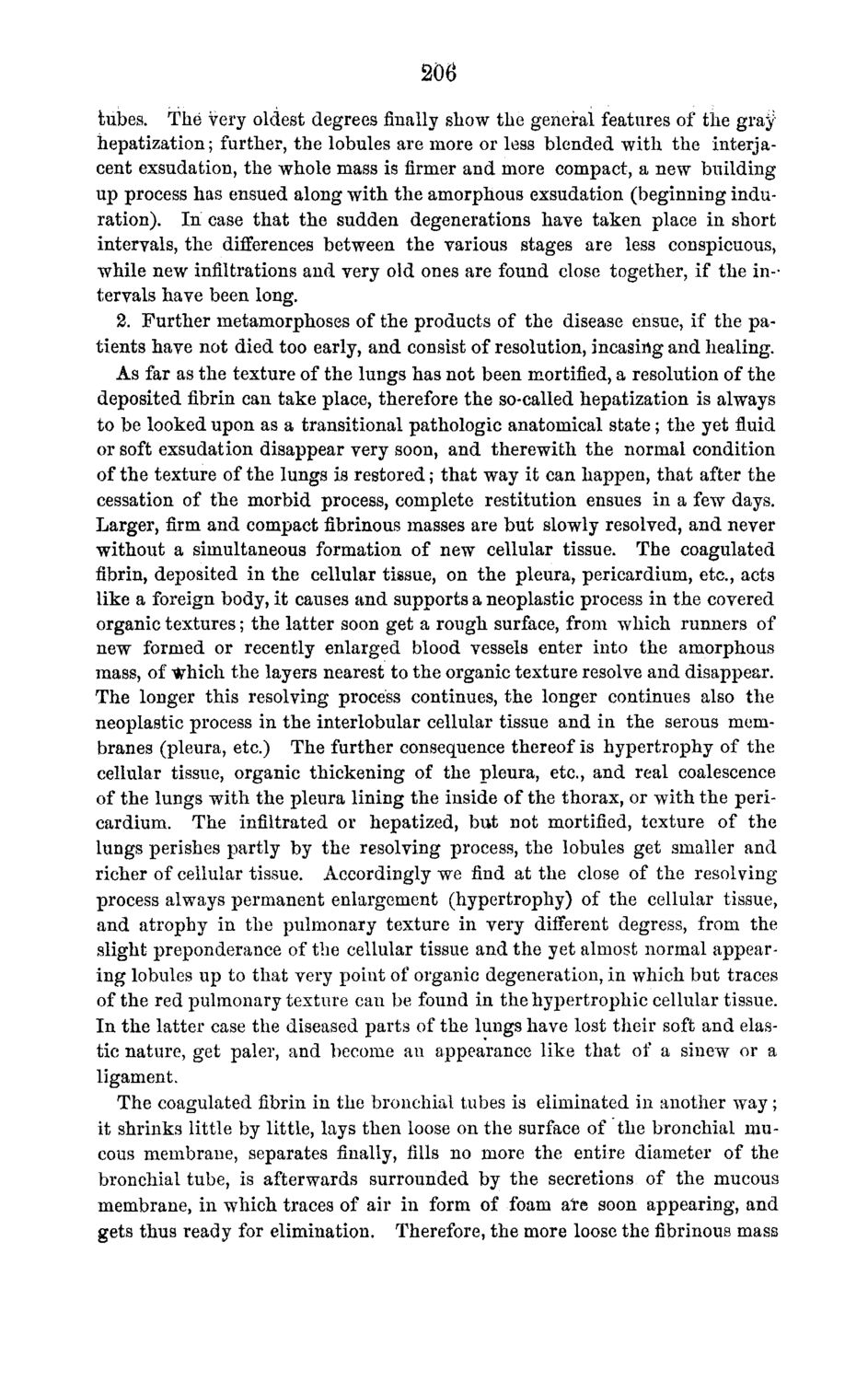| |
| |
Caption: Board of Trustees Minutes - 1870
This is a reduced-resolution page image for fast online browsing.

EXTRACTED TEXT FROM PAGE:
2oe lubes. The very oldest degrees finally show the general features of the gray hepatization; further, the lobules are more or less blended with the interjacent exsudation, the whole mass is firmer and more compact, a new building up process has ensued along with the amorphous exsudation (beginning induration). In case that the sudden degenerations have taken place in short intervals, the differences between the various stages are less conspicuous, while new infiltrations and very old ones are found close together, if the intervals have been long. 2. Further metamorphoses of the products of the disease ensue, if the patients have not died too early, and consist of resolution, incasing and healing. As far as the texture of the lungs has not been mortified, a resolution of the deposited fibrin can take place, therefore the so-called hepatization is always to be looked upon as a transitional pathologic anatomical state; the yet fluid or soft exsudation disappear very soon, and therewith the normal condition of the texture of the lungs is restored; that way it can happen, that after the cessation of the morbid process, complete restitution ensues in a few days. Larger, firm and compact fibrinous masses are but slowly resolved, and never without a simultaneous formation of new cellular tissue. The coagulated fibrin, deposited in the cellular tissue, on the pleura, pericardium, etc., acts like a foreign body, it causes and supports a neoplastic process in the covered organic textures; the latter soon get a rough surface, from which runners of new formed or recently enlarged blood vessels enter into the amorphous mass, of which the layers nearest to the organic texture resolve and disappear. The longer this resolving process continues, the longer continues also the neoplastic process in the interlobular cellular tissue and in the serous membranes (pleura, etc.) The further consequence thereof is hypertrophy of the cellular tissue, organic thickening of the pleura, etc., and real coalescence of the lungs with the pleura lining the inside of the thorax, or with the pericardium. The infiltrated or hepatized, but not mortified, texture of the lungs perishes partly by the resolving process, the lobules get smaller and richer of cellular tissue. Accordingly we find at the close of the resolving process always permanent enlargement (hypertrophy) of the cellular tissue, and atrophy in the pulmonary texture in very different degress, from the slight preponderance of the cellular tissue and the yet almost normal appearing lobules up to that very point of organic degeneration, in which but traces of the red pulmonary texture can be found in the hypertrophic cellular tissue. In the latter case the diseased parts of the lungs have lost their soft and elastic nature, get paler, and become an appearance like that of a sinew or a ligament. The coagulated fibrin in the bronchial tubes is eliminated in another way; it shrinks little by little, lays then loose on the surface of the bronchial mucous membrane, separates finally, fills no more the entire diameter of the bronchial tube, is afterwards surrounded by the secretions of the mucous membrane, in which traces of air in form of foam are soon appearing, and gets thus ready for elimination. Therefore, the more loose the fibrinous mass
| |